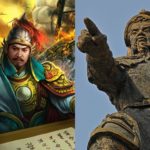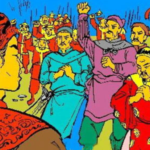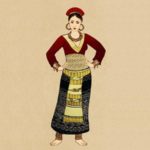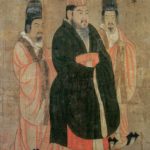Which of the following kings once gave his wife to someone else?
Tran Thai Tong (121-1277) was the first king of the Tran dynasty. In 1225, under the arrangement of Thai prime minister Tran Thu Do, he was given the throne by his wife – the former King Ly Chieu Hoang. The Tran family’s career started from here. According to the Complete Annals of Dai Viet, after ascending to the throne, King Tran Thai Tong conferred the title of Chieu Thanh Hoang Hau to Ly Chieu Hoang. However, because they lived together for 10 years without children, Tran Thu Do forced the king to depose Chieu Thanh Hoang Hau and make her a princess instead. In 1259, King Tran Thai Tong gave his ex-wife – Chieu Thanh Cong Chua, to his adopted son, Le Phu Tran. Later, he became Thai Supreme Emperor from the end of 1278 until his death in 1290. He was often described in history books as a talented emperor, who upheld the dynasty’s achievements and the country’s independence.
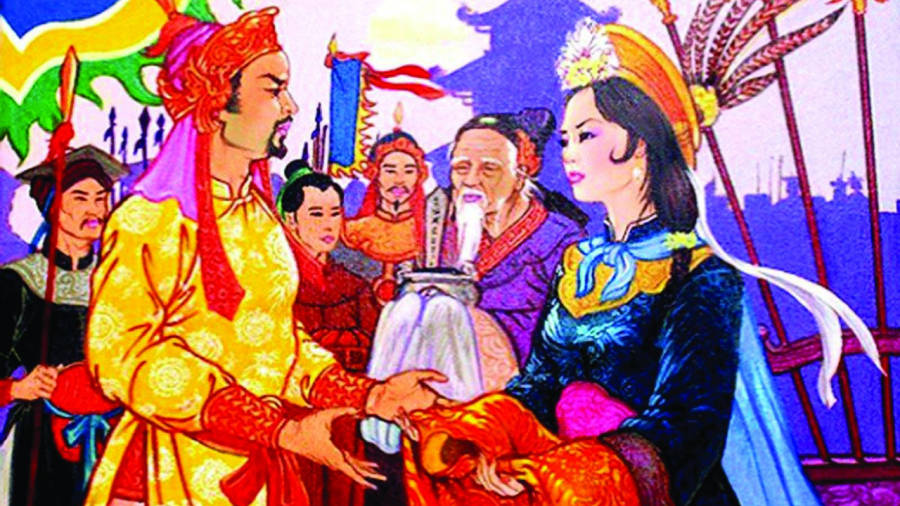
Why was Le Phu Tran given to King Tran Thai Tong’s wife?
Le Phu Tran, from Ai Chau, was a famous general of the Tran dynasty, who served under the reigns of Kings Tran Thai Tong, Tran Thanh Tong, and Tran Nhan Tong. The historical records do not mention his date of birth or death. In the Complete Annals of Dai Viet, the first records about him began in 1250 and ended in 1278, when his wife – Chieu Thanh Cong Chua – passed away. Le Phu Tran’s real name was Le Tan, a descendant of King Le Dai Hanh. According to the Complete Annals of Dai Viet, in the battle against the Mongol Army (1258), King Tran Thai Tong was unfortunately ambushed and shot with arrows. In that dire situation, Le Tan used a boat to protect the king and help him escape the danger. Thanks to this heroic act, Le Tan was granted the national surname (royal family), with a new name – Le Phu Tran, and later, King Tran Thai Tong married his former wife, Chieu Thanh Cong Chua, to him. The two of them lived together until 1278 and had 2 children.
After his relationship with Ly Chieu Hoang, who did King Tran Thai Tong marry?
According to the Complete Annals of Dai Viet, after 10 years of living with Ly Chieu Hoang without any children, Tran Thu Do feared that the Tran family’s career would fall into the hands of another clan. Therefore, he forced King Tran Thai Tong to depose Chieu Thanh Hoang Hau and marry his sister-in-law, Hien Tu Hoang Hau, who was the wife of King An Sinh Vuong – Tran Lieu. Due to this action, Tran Lieu rebelled, and the two brothers no longer saw each other. Hien Tu Thuan Thien Hoang Hau (1216 – 1248) was the second queen of King Tran Thai Tong, the first emperor of the Tran dynasty. She was the mother of Tran Thanh Tong, Tran Quoc Khang (the Great King of Tinh Quoc), and Tran Quang Khai (the Great King of Chieu Minh). She was the direct ancestor of King Tran Nhan Tong. In terms of lineage, she was a princess of the Ly dynasty, a clan that ruled Dai Viet for more than 200 years. With a noble background, she and Chieu Thanh Ly (deposed Queen Ly), Nguyen Thanh Thien Cam Hoang Hau, Hien Tu Tuyen Thanh Hoang Hau were the most prestigious queens in the history of Vietnam.
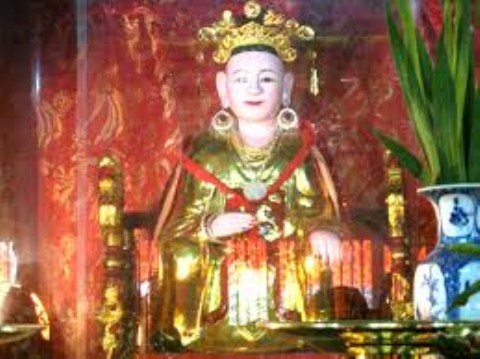
Which king had the most queens in Vietnamese history?
Ly Thai To was the king with the most queens. After ascending to the throne, he established 6 queens. The Complete Annals of Dai Viet records: “Establishing 6 queens, the only queen known as Queen Lap Giao, with a completely different protocol for carriages and dresses compared to other palaces.” In March of the year Binh Thin (1016), Ly Thai To established 3 more queens. Therefore, the total was 9 queens. Ly Thai To (974 – 1028), whose real name was Ly Cong Uan, was the founding emperor of the Ly dynasty in Vietnamese history, ruling from 1009 until his death in 1028. He was one of the 14 outstanding national heroes of Vietnam. He came from a high-ranking military officer position under the Pre-Le dynasty. In 1009, when the last king of the Pre-Le dynasty, Le Long Dinh, died and his son was still young, Ly Cong Uan was promoted to emperor by Dao Cam Moc’s forces and Zen master Van Hanh. During his reign, he devoted a lot of time to suppressing rebellions, as the people of Dai Co Viet still lacked trust in the central government in the border regions. The central government gradually strengthened, rebel forces were suppressed, the capital was moved from Hoa Lu to Dai La in July 1010, and this city was renamed Thang Long, marking the long-term development of the Ly dynasty, which lasted for 216 years.


























